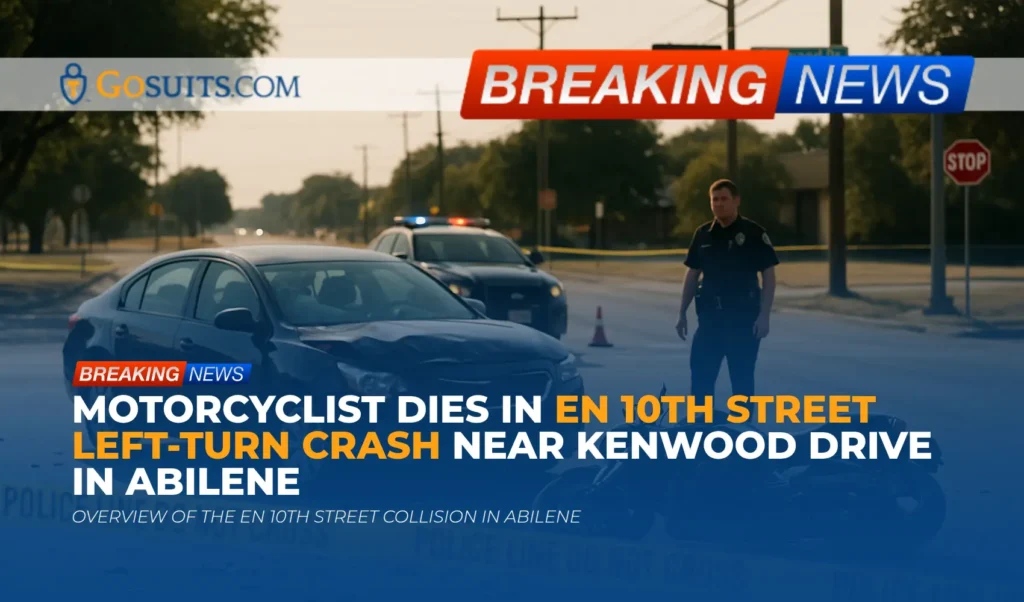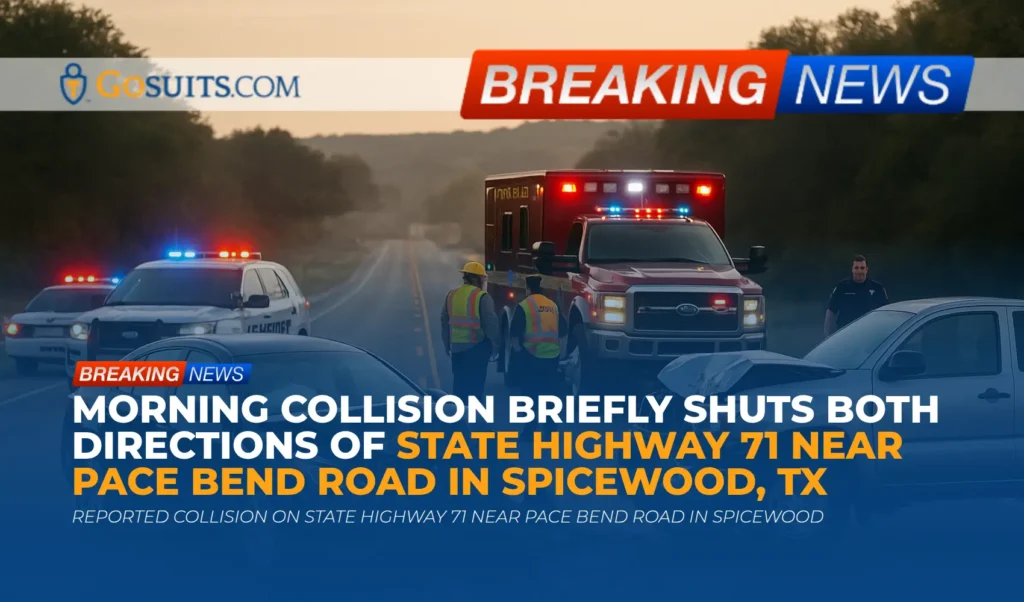- What happened and why it matters to Californians
- Key facts and timeline
- The federal English proficiency rule for commercial truck drivers
- How federal safety funding supports communities
- Potential implications for road safety and crash investigations in California
- If a serious truck crash occurs: who to call and what documents to request
- Preserving evidence after a truck crash: time‑sensitive steps
- Insurance and liability considerations in truck crashes
- Wrongful death and injury claim deadlines in California
- Practical safety considerations for the public
- Commentary from Gosuits California Personal Injury Attorney
- Next steps: why acting promptly matters
What happened and why it matters to Californians
Federal officials have announced the withholding of $40.6 million in transportation safety funds from California over a dispute about how the state enforces the federal English proficiency requirement for commercial truck drivers. According to federal statements, California was warned to adopt or demonstrate compliance with the rule and faces the possibility of additional funding being withheld if it does not make changes. California officials responded that existing licensing and enforcement measures already meet federal safety requirements and highlighted comparatively favorable fatal crash data among state license holders. The funds identified include support for roadside inspections, traffic enforcement, safety audits of trucking companies, and public education programs.
For families affected by truck crashes and for Californians who share the road with heavy commercial vehicles, this policy dispute is more than a headline. It touches core questions about road safety, how truck drivers are screened and qualified, and how state and federal agencies coordinate to prevent crashes and investigate them thoroughly when they occur. The outcome may affect resources available for inspections and safety initiatives that can reduce crash risks and improve post-crash investigations.
Key facts and timeline
What federal officials said
Federal transportation authorities reported they are withholding $40.6 million in safety funds tied to commercial motor vehicle enforcement and education. They also signaled the possibility of escalating measures, including withholding larger amounts of federal highway funds, if California does not demonstrate compliance with the federal English proficiency standard for commercial drivers.
What California officials said
California’s response emphasized that the state’s laws and procedures for licensing and enforcement either mirror or produce the same effect as federal safety requirements. They indicated that the English proficiency requirement is already enforced through commercial driver’s license (CDL) procedures and pointed to favorable fatal crash rates among California CDL holders compared to national averages.
Why this matters beyond policy
Disagreements between federal and state agencies can have practical effects. Funding for roadside inspections, carrier safety audits, and enforcement helps identify unsafe vehicles and drivers before a tragedy happens and supports thorough follow-up when crashes do occur. Any reduction or uncertainty in funding may strain program capacity, which in turn can influence the frequency of inspections, the speed of investigations, and the breadth of safety outreach.
The federal English proficiency rule for commercial truck drivers
Federal law requires that a person driving a commercial motor vehicle in interstate commerce meet specific qualification standards. Among them is the ability to read and speak English sufficiently to understand highway traffic signs and to respond to official questions. This requirement appears in the Federal Motor Carrier Safety Regulations at 49 CFR 391.11(b)(2).
States administer CDL programs under federal standards for testing, licensing, and disqualification. Those standards appear in 49 CFR Part 383. While states conduct the licensing process, carriers are responsible for ensuring any person they allow to operate a commercial motor vehicle is qualified under federal rules. If a driver does not meet the qualification standards, including the English requirement, the carrier can face regulatory consequences, and the issue may be probative in civil litigation depending on the facts.
How federal safety funding supports communities
Many state-level enforcement activities are supported by federal grants and partnerships. One of the principal programs is the Motor Carrier Safety Assistance Program (MCSAP), which helps states fund commercial vehicle inspections, traffic enforcement, and compliance reviews. See the program overview at the Federal Motor Carrier Safety Administration (FMCSA): FMCSA MCSAP Program Overview.
These funds support on-the-ground work such as:
- Roadside inspections to remove unsafe trucks and drivers from service when necessary.
- Traffic enforcement focused on behaviors that elevate crash risk, such as speeding or following too closely.
- Carrier safety audits to verify that companies maintain driver qualification files, hours-of-service records, and vehicle maintenance logs.
- Public education to build awareness about sharing the road safely with large trucks.
If funding is reduced or delayed, agencies may need to prioritize certain activities over others. The public may see fewer inspections or slower follow-up on complaints. For families coping with the aftermath of a serious crash, such resource constraints can complicate the pace and depth of official investigations.
Potential implications for road safety and crash investigations in California
The English proficiency rule is aimed at ensuring drivers can read traffic control devices, understand roadside warnings, and communicate with law enforcement and inspectors. In practice, it is one of many elements in a layered safety system that includes driver training, hours-of-service limits, equipment maintenance, and company oversight. Whether or not this specific policy dispute changes day-to-day safety on California roads will depend on how quickly it is resolved and whether enforcement programs retain the resources they need to operate effectively.
For families and injured people, the more immediate questions are practical. After a crash involving a commercial truck, who is responsible for investigating? Which records can be requested, and from whom? How do federal rules about driver qualifications and recordkeeping affect the evidence that may be available? The sections below provide a focused, fact-based guide with references to official sources.
If a serious truck crash occurs: who to call and what documents to request
Emergency response and law enforcement
In an emergency, call 911. In California, highway crashes are commonly handled by the California Highway Patrol (CHP), while crashes on city streets may be handled by the local police department. The responding agency creates the collision report that documents scene observations, involved parties, and sometimes preliminary contributing factors.
How to request a CHP collision report
CHP collision reports can be requested through the local Area office. The agency outlines eligibility and the process for obtaining a report on its website: CHP: How to Obtain a Collision Report. California Vehicle Code section 20012 limits access to involved parties, their representatives, and certain other authorized persons.
Municipal police reports
If a city police department responded, contact that department’s records unit. Procedures vary by agency, but access is typically governed by the same principles in Vehicle Code section 20012 and the California Public Records Act. Be prepared to provide a report number, date, location, and names of involved parties if available.

Medical examiner and autopsy records in fatal cases
In fatal crashes, the county medical examiner-coroner investigates the cause and manner of death. California law outlines the coroner’s duties to inquire into sudden, unusual, or violent deaths at Government Code section 27491. Next of kin can typically request certain records from the county office.
Autopsy reports are generally disclosable to next of kin, with limitations on photographs and sensitive images. California restricts public access to autopsy and similar death-scene images under Code of Civil Procedure section 129. Policies and procedures vary by county. Examples of county offices include:
Toxicology and post-accident testing
After certain crashes, federal rules require post-accident drug and alcohol testing of commercial drivers under defined circumstances. See 49 CFR 382.303. Toxicology results may be part of a law enforcement investigation or coroner’s file in fatal cases. If available, request guidance from the responding agency or the medical examiner on how and when such results can be released to authorized parties.
Other potentially helpful records
- 911 audio and CAD logs can sometimes be requested from the dispatch center under the California Public Records Act, subject to exemptions while investigations are active.
- Traffic camera or intersection video may exist, depending on location. These recordings are overwritten quickly in many jurisdictions, so prompt requests matter.
- FMCSA involvement may occur when a carrier is investigated for safety compliance. Contact information for FMCSA field offices, including the California Division, is listed at FMCSA Field Offices.
Because requests for records can affect civil claims and because statements made to insurers or investigators can carry consequences, it is advisable to consult with a seasoned attorney before contacting an insurance company or making detailed written or recorded statements. What is said to an insurer may be used in later proceedings.
Preserving evidence after a truck crash: time‑sensitive steps
Commercial carriers must keep certain safety records for set periods under federal law. Understanding these rules can help explain why quick action is important in serious crashes.
- Hours-of-service records. Carriers must retain drivers’ records of duty status and supporting documents for a limited time. Under 49 CFR 395.8, retention periods are generally six months for records of duty status and related supporting documents. Many fleets use electronic logging devices (ELDs) that capture duty status and vehicle movement data.
- Accident register. Carriers must maintain an accident register for each accident as defined by FMCSA, including details such as date, location, injuries, and hazardous materials release, for three years. See 49 CFR 390.15.
- Driver qualification files. Carriers must keep driver qualification files, including medical certification, road tests, and other documentation. See 49 CFR 391.51 for recordkeeping requirements.
- Vehicle inspection and maintenance. Carriers must maintain vehicle inspection and maintenance records under Part 396. These records can shed light on whether equipment issues played a role.
- Onboard technology. Many commercial vehicles store event data in engine control modules, ELDs, and telematics systems. While federal law does not require carriers to keep this data indefinitely, it can be crucial for reconstructing speed, braking, and vehicle movements. Promptly sending preservation notices can help prevent routine overwriting.
Because of short retention periods and the risk that data will be overwritten or lost, requests to preserve evidence should be made as early as possible. Coordinating preservation with law enforcement and, where appropriate, with FMCSA can help secure critical records.
Insurance and liability considerations in truck crashes
Minimum insurance limits for commercial carriers
Most interstate motor carriers must carry liability insurance at or above federally mandated minimums, depending on the cargo. For example, $750,000 for general freight is the current minimum under 49 CFR 387.9. Higher limits apply to certain hazardous materials. Actual insurance carried may be higher than the minimum.
Potentially responsible parties
Commercial truck crash cases often involve multiple entities, such as the driver, the motor carrier, a broker or shipper, a vehicle or parts manufacturer, a maintenance contractor, or a third-party loading facility. The allocation of responsibility depends on facts like ownership, control, contractual relationships, and compliance with federal and state safety rules. Evidence from driver qualification files, hours-of-service records, maintenance logs, and electronic data can all be significant.
How English proficiency issues may surface in civil claims
The federal English requirement in 49 CFR 391.11(b)(2) is part of the driver qualification standards. If evidence shows a driver could not read and speak English sufficiently to understand traffic signs or communicate during stops, that may be relevant in evaluating a carrier’s hiring and supervision practices. However, every case is fact-specific. Proving the cause of a crash generally involves a combination of driver behavior, vehicle condition, road environment, and other factors.
Speaking with insurance companies
Insurance adjusters often contact people shortly after a crash. It is prudent to consult an attorney before speaking at length or providing recorded statements to any insurer. Statements made to insurers can be used later to limit or contest claims. A free consultation can help clarify rights and obligations before any contact with insurance companies.
Wrongful death and injury claim deadlines in California
California sets strict time limits for bringing claims. Missing a deadline can prevent a court from hearing a case.
- Personal injury and wrongful death. Most claims must be filed within two years of the injury or death under Code of Civil Procedure section 335.1.
- Claims against public entities. If the claim is against a public entity, such as a state or local agency responsible for a roadway or involved vehicle, a written claim generally must be presented within six months for death or injury claims. See Government Code section 911.2. Filing a claim with a public entity is a prerequisite to filing a lawsuit in many circumstances.
Because calculating deadlines can be complex, particularly when multiple parties or government agencies are involved, time should not be lost in clarifying which deadlines apply.

Practical safety considerations for the public
While agencies work through policy questions, day-to-day safety on the road still depends on everyone’s choices. Large trucks have wide blind spots, long stopping distances, and limited maneuverability. Practical steps include allowing extra following distance, avoiding lingering alongside a truck’s right side, and giving trucks ample room to turn. NHTSA provides data tools that shed light on crash patterns and contributing factors in each state through the Fatality Analysis Reporting System: NHTSA FARS.
For communities worried about commercial vehicle safety in their area, reporting hazardous conditions or repeat problems to local law enforcement or the CHP can help target enforcement. If a crash occurs, prompt documentation with photographs, witness information, and medical evaluation can make a significant difference in understanding what happened and protecting rights.
Commentary from Gosuits California Personal Injury Attorney
Our hearts go out to everyone directly and indirectly affected by serious truck crashes. Policy disputes can feel distant, but the consequences are personal when a loved one is hurt or killed. This article is shared for general educational purposes to help community members understand how federal and state rules intersect with real-world investigations and claims after a crash.
From a personal injury perspective, the core of this story is about safety accountability. The English proficiency requirement has been a longstanding federal standard intended to ensure drivers can read traffic control devices and communicate with officials. California’s position is that its licensing and enforcement practices already meet federal safety expectations, while federal officials believe additional steps are necessary. Regardless of where this dispute lands, the priorities for families remain the same: thorough investigations, preservation of evidence, and a fair assessment of responsibility based on the facts.
In practice, insurance companies and corporations often move quickly after a crash to shape the narrative and collect statements. Adjusters are trained to minimize payouts by obtaining early recorded statements, asking leading questions, or encouraging quick settlements before the full impact of injuries is known. Companies may focus on partial facts, overlook key records, or resist producing data unless specifically requested. Understanding the federal and state recordkeeping rules, like those governing hours-of-service, accident registers, and driver qualification files, helps level the playing field.
A free consultation with a skilled attorney can be valuable at the outset. It costs nothing to understand which records should be preserved, what deadlines apply, and how to communicate with insurers without risking unintended consequences. Early guidance can help ensure that important evidence does not disappear and that rights are protected while agencies complete their own investigations.
Next steps: why acting promptly matters
- Identify the investigating agency. Confirm whether the CHP or a city police department handled the scene. This determines where the collision report can be requested and which records process applies.
- Request official records quickly. Collision reports, 911 audio, and traffic camera footage can be time-sensitive. Many systems overwrite data within days or weeks. Prompt requests reduce the risk of losing key information. For CHP reports, see the official process at CHP: How to Obtain a Collision Report, and note access rules in Vehicle Code section 20012.
- Protect electronic evidence. ELD data, engine control module information, and telematics can be overwritten during routine operations. Early preservation letters help safeguard this data. Federal retention requirements for logs and supporting documents are limited, often six months or less, per 49 CFR 395.8.
- Document injuries and treatment. Medical records provide an essential timeline of symptoms, diagnoses, and care. Delays in evaluation can lead insurers to argue that injuries were minor or unrelated.
- Avoid premature insurance statements. Recorded statements can be used to challenge liability or damages later. Speaking with an attorney first helps ensure communications do not unintentionally limit a claim.
- Note claim deadlines. California’s general two-year period for injury and wrongful death claims (CCP 335.1) and the six-month claim requirement for many public entity matters (Gov. Code 911.2) make timeliness essential.
- Understand the role of federal and state agencies. FMCSA can conduct compliance reviews and supports state enforcement under programs like MCSAP (FMCSA MCSAP Overview). Knowing which agency may hold relevant records informs targeted requests.
- For fatal cases, coordinate with the medical examiner. Next of kin can request autopsy and toxicology findings from the county medical examiner-coroner, with restrictions on sensitive images under CCP 129. The coroner’s statutory duties are outlined in Gov. Code 27491.
- Comply with DMV accident reporting rules. California requires parties to report certain crashes to the DMV within 10 days, including those with injury or death or property damage above a threshold. See the DMV’s guidance at California DMV: Report an Accident.
Acting promptly helps preserve evidence, clarifies which agencies and records are involved, and ensures that important statutory deadlines are not missed. Early, informed steps often make a meaningful difference in the accuracy and completeness of the eventual investigation and any civil claim that follows.






